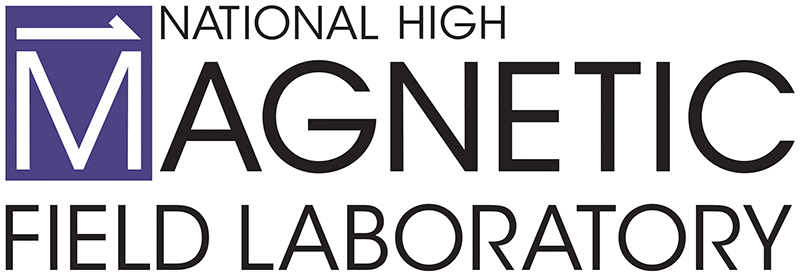Tag: Energy research
Italian scientist Alessandro Volta was the first to recognize key principles of electrochemistry, and applied those principles to the creation of the first battery.
Electricity goes through some ups and downs on its way from the power plant to your house. Here's how it works.
The simple electrical cell explained here is the most basic type of "wet" cell and demonstrates the fundamental chemistry behind batteries.
It may look like a simple black blob, but an oil drop is in fact a phenomenally complex mix of immense (relatively speaking) molecules called hydrocarbons. Using a type of mass spectrometry called FT-ICR (in which the MagLab is a world leader), scientists can analyze oil and other macromolecules with amazing precision, uncovering important secrets in the process.
This sports and science mash up features new geeky games inspired by the cool things scientists study in high-field magnets.
Follow us down this yellow brick road to learn how these deceptively small molecules conceal enormous potential for applications from carbon capture to data storage.
A lot of the research conducted in powerful magnets ends up having a powerful effect on our day-to-day lives.
Physicist Felix Bloch developed a non-destructive technique for precisely observing and measuring the magnetic properties of nuclear particles.
Paul Adrien Maurice Dirac was an outstanding twentieth century theoretical physicist whose work was fundamental to the development of quantum mechanics and quantum electrodynamics.
Joseph Henry was an American scientist who pioneered the construction of strong, practical electromagnets and built one of the first electromagnetic motors.
The discovery of radio waves, which was widely seen as confirmation of James Clerk Maxwell's electromagnetic theory and paved the way for numerous advances in communication technology, was made by German physicist Heinrich Hertz.
James Prescott Joule experimented with engines, electricity and heat throughout his life.
Klaus von Klitzing is a Nobel laureate who won the prestigious award in 1985 for his discovery of the quantized Hall effect, sometimes referred to as the quantum Hall effect.
At the turn of the 19th century, scientists were beginning to gain a rudimentary understanding of electricity and magnetism, but they knew almost nothing about the relationship between the two.
Theodore Maiman built the world's first operable laser, which utilized a small synthetic rod with silvered ends to produce a narrow beam of monochromatic light with a wavelength of approximately 694 nanometers.
Walther Meissner discovered while working with Robert Ochsenfeld that superconductors expel relatively weak magnetic fields from their interior and are strongly diamagnetic.
Austrian-born scientist Wolfgang Ernst Pauli made numerous important contributions to twentieth-century theoretical physics, including explaining the Zeeman effect, first postulating the existence of the neutrino, and developing what has come to be known as the Pauli exclusion principle.
Although he didn't start studying physics until he retired from the clock-making business at age 30, French native Jean Peltier made immense contributions to science that still reverberate today.
In a career that lasted seven decades, Max Planck achieved an enduring legacy with groundbreaking discoveries involving the relationship between heat and energy, but he is most remembered as the founder of the "quantum theory."
Edward Mills Purcell was an American physicist who received half of the 1952 Nobel Prize for Physics for his development of a new method of ascertaining the magnetic properties of atomic nuclei.
Theoretical physicist Julian Schwinger used the mathematical process of renormalization to rid the quantum field theory developed by Paul Dirac of serious incongruities with experimental observations that had nearly prompted the scientific community to abandon it.
Awarded more than 100 patents over the course of his lifetime, Nikola Tesla was a man of considerable genius and vision.
Alessandro Volta was an Italian scientist whose skepticism of Luigi Galvani's theory of animal electricity led him to propose that an electrical current is generated by contact between different metals.
Carl Edwin Wieman is one of three physicists credited with the discovery of a fifth phase of matter, for which he was awarded a share of the prestigious Nobel Prize in 2001.
Compared to incandescent lamps, fluorescent lamps last longer, require less energy and produce less heat, advantages resulting from the different way in which they generate light.
Counting alpha particles was tedious and time-consuming work, until Hans Geiger came up with a device that did the job automatically.
For centuries, the electroscope was one of the most popular instruments used by scientists to study electricity. Abraham Bennet first described this version in 1787.
The first hydroelectric power plant, known as the Vulcan Street Plant, was powered by the Fox River in Appleton, Wisconsin.
With only minor changes to its original 1866 design, the Leclanché cell evolved into modern alkaline batteries and the most popular household battery to date.
French physicist Gaston Planté invented the first rechargeable battery, leaving an enduring legacy in battery history. To see it, just pop the hood of your car.
Alessandro Volta invents the first primitive battery, discovering that electricity can be generated through chemical processes; scientists quickly seize on the new tool to invent electric lighting. Meanwhile, a profound insight into the relationship between electricity and magnetism goes largely unnoticed.
The first telegraphs are constructed and Michael Faraday produces much of his brilliant and enduring research into electricity and magnetism, inventing the first primitive transformer and generator.
The legendary Faraday forges on with his prolific research and the telegraph reaches a milestone when a message is sent between Washington, DC, and Baltimore, MD.
This work reports the first observation of the dynamical generation of a spin polarized current from an antiferromagnetic material into an adjacent non-magnetic material and its subsequent conversion into electrical signals
High-resolution electron magnetic resonance studies of the spin-wave spectrum in the high-field phase of the multiferroic Bismuth ferrite (BiFeO3) reveal direct evidence for the magnetoelastic coupling through a change in lattice symmetry from rhombohedral to monoclinic. This study provides important information for designing future spintronics devices based on BiFeO3.
New instrumentation allows electron magnetic resonance experiments to be performed in the lab’s flagship 36 T Series-Connected Hybrid magnet, unlocking exceptionally high-resolution EMR spectra at the highest magnetic fields.
Studying a mysterious magnetic material (Na2Co2TeO6) that could be used in future quantum computing schemes, researchers revealed the crucial role microscopic disorder in the crystals plays in affecting the macroscopic magnetic properties.
Previous work at the MagLab demonstrated that it is possible to design molecules containing a LuII ion such that its lone unpaired electron is shielded against harmful magnetic noise, giving rise to a prototype molecular spin qubit with enhanced coherence. The present investigation extends this strategy to other members of the lanthanide series, such as PrII, which also has a lone unpaired electron in the 5d shell, while its two unpaired f-electrons are non magnetic.
Molecules containing the Earth-abundant metal, titanium, are widely used as catalysts for production of polymers such as polyethylene, polycarbonates and other “plastics”. High-field EPR measurements performed at the MagLab on a series of titanium molecules prepared by the group of Daniel Mindiola (U. Penn) show small but distinct differences among them which will guide future synthetic efforts aimed at making more catalytically useful molecules.
A two-dimensional triangular network of europium ions connected by organic pyrazine molecules is shown to possess the perfect ingredients for efficient magnetic refrigeration at very low (sub-kelvin) temperatures. In particular, the large magnetic moment and high europium concentration open up exciting possibilities for efficient on-chip cooling, especially in scenarios where established inorganic refrigerants cannot be utilized.
Molecular fossils of chlorophyll (called porphyrins) more than 1.1 billion years old find suggest that photosynthesis began 600 million years earlier than previously established.
Researchers have discovered a new method to create encapsulated carbon nanomaterials that contain fluorine. Known as fullerenes, these nanocages are promising candidates for clean energy applications.
A new method to characterize crude oil corrosion shows that corrosion in acidic crude oils depends on the specific structures of the acid molecules, information that can help improve oil valuation and refining.
Road asphalt is made from aggregate (rocks) mixed with a "binder” from the residue remaining after extraction of gasoline and oils from petroleum crude oil. Until recently, this binder was thought to be chemically unreactive. Maglab scientists subjected a thin film of asphalt binder to simulated sunlight in the laboratory and used ultrahigh resolution mass spectrometry to reveal thousands of new, water-soluble chemicals that could be released into the environment by rainfall.
New research shows that high concentrations of polycyclic aromatic hydrocarbons (PAHs) found in coal tar pavement sealants are oxidized into toxic, water-soluble compounds by sunlight and subsequently washed into the environment by rainwater, polluting natural water systems, negatively impacting marine ecosystems and public health.
MagLab researchers use 21 tesla ion cyclotron resonance (ICR) mass spectrometry to identify the best way to produce carbon fibers from petroleum waste products. The best carbon fibers are made from molecules that don’t contain sulfur or large polycyclic aromatic hydrocarbon structures, and these bad molecules can be converted to better precursors by mild thermal treatment.
This research introduces a new separation method that is combined with precise mass measurements to identify thousands of previously undetected molecules in bio-oils (renewable liquids made by heating wood chips in the absence of oxygen). These insights help scientists better understand the composition of bio-oils, including key compounds that affect fuel quality, which guides the design of cleaner, more efficient renewable fuels and supports progress toward energy sustainability.
These include biological, environmental and petrochemical applications as well as analytical method development for FT-ICR mass spectrometry.
Combining high-field NMR with infrared microscopy, scientists learned more about how gas diffuses in a novel class of molecular sieves that could one day be used for gas separation.
For the first time, NMR diffusion measurements have been successfully used in a metallic catalyst, examining gas exchange rates in nanoporous gold. These findings helped determine an optimal process for efficiently catalyzing CO to CO2 and may help make the catalyst more effective for industrial applications that reduce waste from power plants and refineries.
Metal-organic frameworks (MOFs) are porous materials with high surface areas that can host a variety of different guest molecules, leading to applications in catalysis, drug delivery, chemical separation, fuel cells, and data storage. In order to design better MOFs, knowledge of their molecular-level structures is crucial. At the MagLab, the highest-field NMR spectrometer in the world was used to probe the complex structures of MOFs both "as built" and as they exist when other "guest" molecules are inserted inside the framework.
Measurements performed at the National High Magnetic Field Laboratory provide unique insight into molecular structure of next-generation catalysts for the production of the widely used industrial chemical, propene.
A new method to study how the nuclei of atoms “communicate” with one another in the presence of unpaired electron spins has been developed at the MagLab. Known as hyperpolarization resurgence (HypRes), this method benefits and expands the application of a revolutionary technique known as dynamic nuclear polarization (DNP), which provides enormous signal enhancements in nuclear magnetic resonance (NMR) experiments.
Rhodium (Rh) is one of the most costly and scarce platinum group elements; however, it is of great importance in many technologies including catalytic converters, electronics, and medical devices. Here ultra-high magnetic field instruments and new NMR methodology at the MagLab unlocked access to perform 103Rh solid-state nuclear magnetic resonance, a technique that can study the molecular structures of Rh-containing materials.
Solid oxide fuel cells generate clean energy by oxidizing green fuels like hydrogen and reducing atmospheric oxygen, without recharging or emissions that contribute to climate change. They use a fast ion conductor electrolyte to move oxygen ions between electrodes, converting chemical energy to power. Our research uses 71Ga solid-state NMR spectroscopy on the highest-field magnet in the world to study the numbers of oxygen ions near gallium atoms – this will inform the design of better electrolyte materials for fuel cells.
Superconductors conduct large amounts of electricity without losses. They are also used to create very large magnetic fields, for example in MRI machines, to study materials and medicine. Here, researchers developed a fast, new "smart" technique to measure how much current a superconductor can carry using very high pulsed magnetic fields.
In everyday life, phase transitions - like when water boils and turns into steam or freezes and becomes ice - are caused by changes in temperature. Here, very high magnetic fields are used to reveal a quantum phase transition not caused by temperature, but instead driven by quantum mechanics upon changing the concentration of electrons, work that could hold critical clues that explain high-temperature superconductivity.
Small additions of elemental Hafnium boosts current-carrying capability in Nb3Sn superconductor.
High temperature superconducting magnets offer tremendous potential for technological advancements and scientific discoveries, making them essential in various aspects of modern society. This work focuses on a milestone in mechanical reinforcement and overall operation of a Bi-2212 magnet.
We developed a new fabrication method using superconducting materials inside a box, making it more efficient than current designs. This helps create powerful electron and ion beams at lower costs, which can be used for tasks like breaking down harmful chemicals, sterilizing medical equipment, detecting dangerous materials, and producing medical isotopes.
State-of-the-art ion cyclotron resonance magnet system offers researchers significantly more power and accuracy than ever before.
Martha Chacón-Patiño to jump-start collaboration that could advance both the treatment of cancer and the study of petroleum.
35 highlights out of 423 reports representing the best of life sciences, chemistry, magnet science and technology, and condensed matter physics.
Findings that “go against the textbooks” may improve biofuel production.
Promising technique could be used to turn light into electricity and electricity into light.
In a crystalline structure that locks a heavy atom in a metal cage, scientists find a key to materials that can turn heat into electricity, and vice versa.
Researchers see promise in a cheaper, safer alternative to lithium batteries.
Physicist Christianne Beekman and chemist Yan-Yan Hu have been recognized as outstanding early-career researchers by the National Science Foundation.
MagLab researchers show that exposure to sun and water causes thousands of chemicals to leach from roads into the environment.
New funding will explore the mysteries of the Platinum group elements to investigate possible alternatives to rare and expensive materials used in an array of clean energy applications.
Researchers reveal how carbohydrates form plant biomass, information that may lead to new biorenewable energy solutions.
The MagLab and the Bruker Corporation have installed the world’s first 21 tesla magnet for Fourier Transform Ion Cyclotron Resonance (FT-ICR) mass spectrometry.
The first mass spectrum from Fourier-Transform Ion Cyclotron Resonance happened in December 1973. The co-inventor went on to build MagLab’s world-renowned program.
Fuel made from corn harvest waste would reduce greenhouse emissions by 70%.
An FSU chemistry team advances work to find batteries that charge faster and last longer.
MagLab researchers are working to investigate platinum group metals using the world’s most powerful Nuclear Magnetic Resonance systems.
Kathleen Amm will coach and guide promising young leaders from the Department of Energy’s 17 National Labs.
The next-generation batteries hold great potential to revolutionize energy storage.
From Superman materials to tree-bark gasoline, the MagLab is on the front line of energy research.
Thanks to the MagLab’s expertise and unique instruments, a geochemist finds a treasure trove of oil-spill data buried beneath the sea.
How can the barrier between oil and water in emulsions be broken down? When things overlap, you often get more than the sum of those parts. Or as one chemist put it, A plus B isn’t necessarily AB: It's probably something a lot more interesting.
Which adjoining ingredients can yield a better lithium ion battery? Learn about a scientist who is pushing the boundaries of knowledge by exploring the boundaries between things.
Used to perform complex chemical analysis, this magnet offers researchers the world's highest field for ion cyclotron resonance mass spectrometry.
A young chemist studying fracking fluid talks about what it's like when science hits close to home.
With determination, confidence and a top-notch team, this MagLab chemist exposed the complex secrets of crude oil, busting open a vast, new field.
More Tags
- Biology
- Biochemistry
- Chemistry
- Cryogenics
- Dynamic nuclear polarization
- Energy research
- Engineering
- Environment
- Geochemistry
- Health research
- Life research
- Magnet technology
- Mass spectrometry
- Materials research
- NMR and MRI
- Physics
- Postdocs and grad students
- Quantum computing
- Science & Art
- Semiconductors
- STEM education
- Superconductivity
- Universe
- 100-tesla multi-shot magnet
- 32-tesla superconducting magnet
- 45-tesla hybrid magnet
- 900MHz magnet
- 36-tesla SCH
- 25-tesla split magnet
- 41-tesla resistive magnet
- 21-tesla ICR magnet
- 600 MHz 89 mm MAS DNP System


